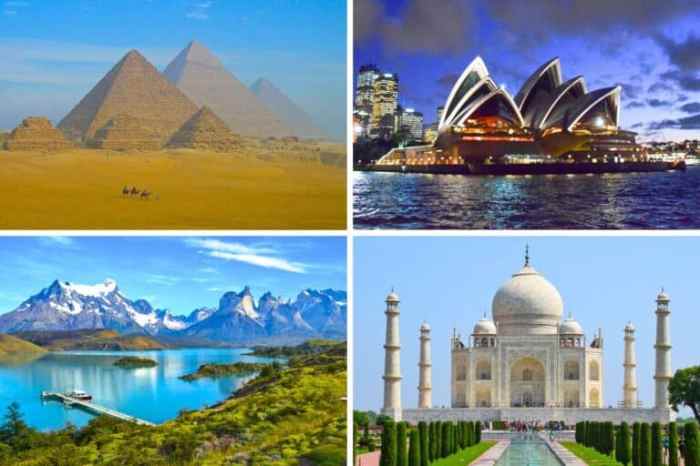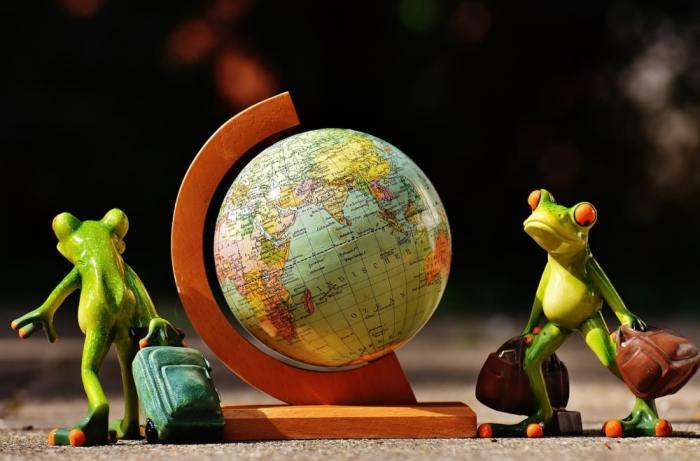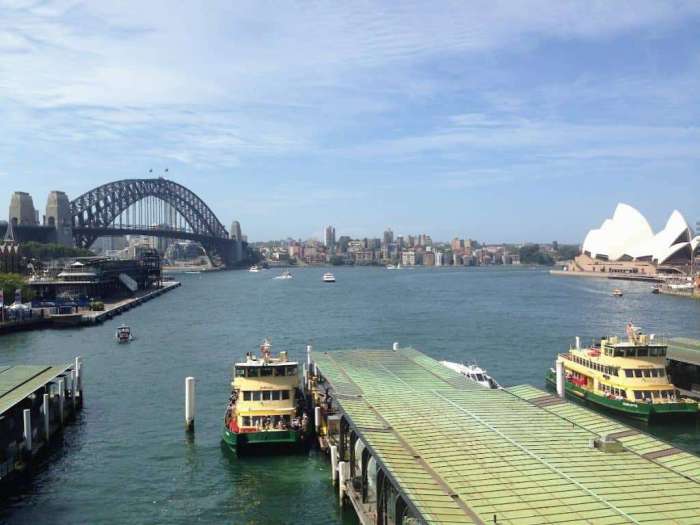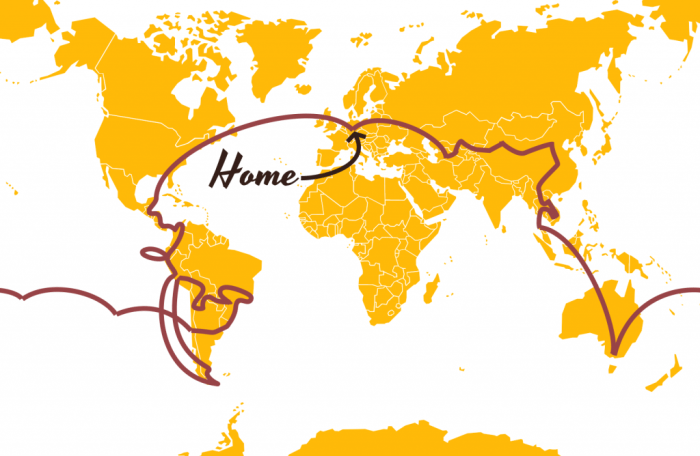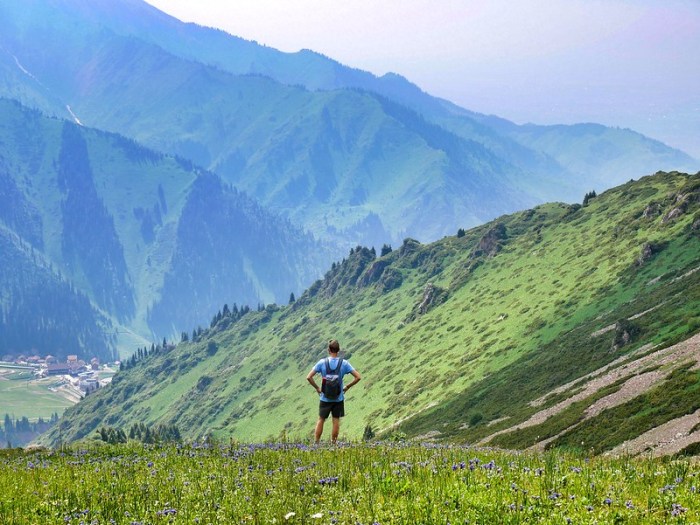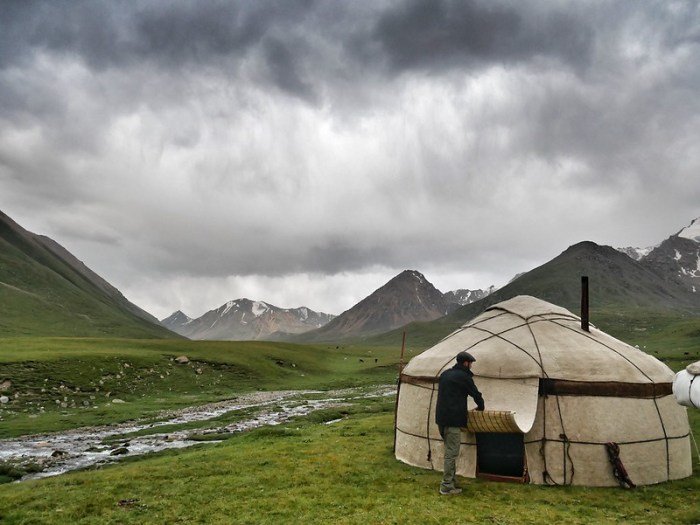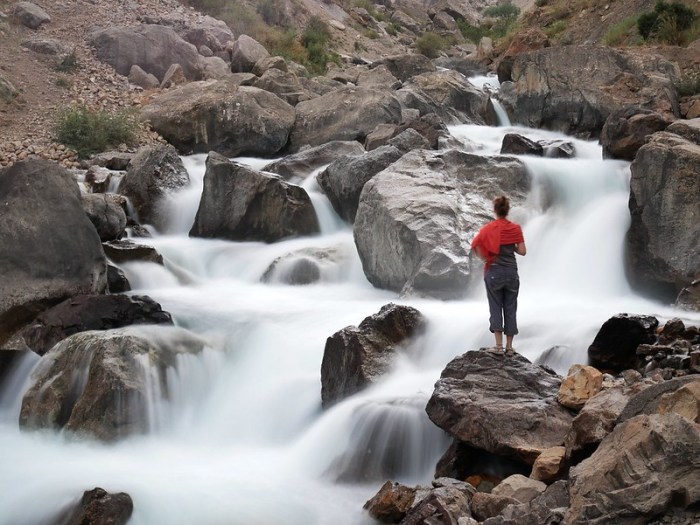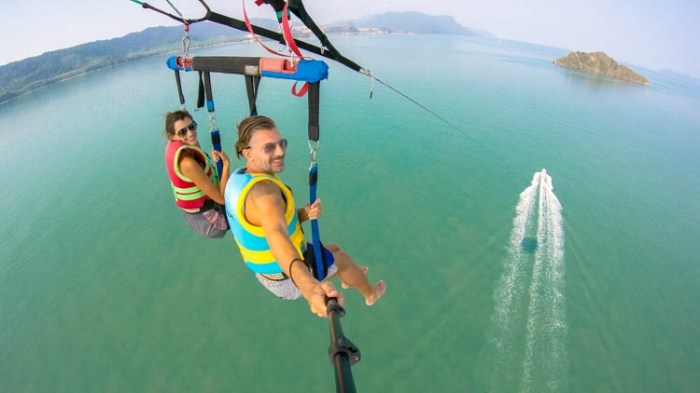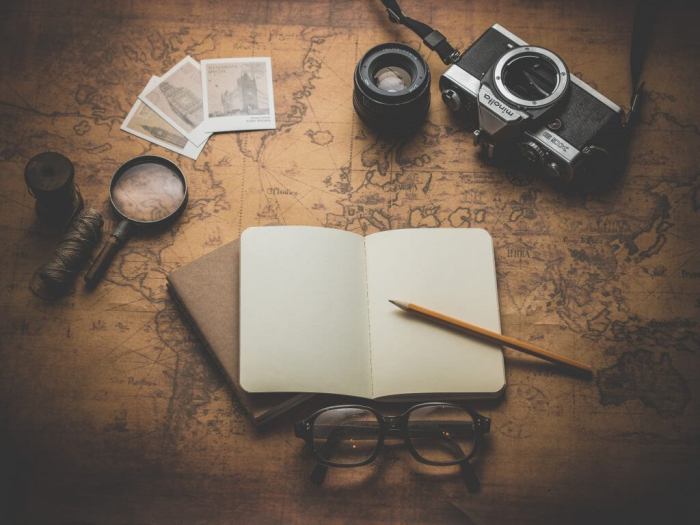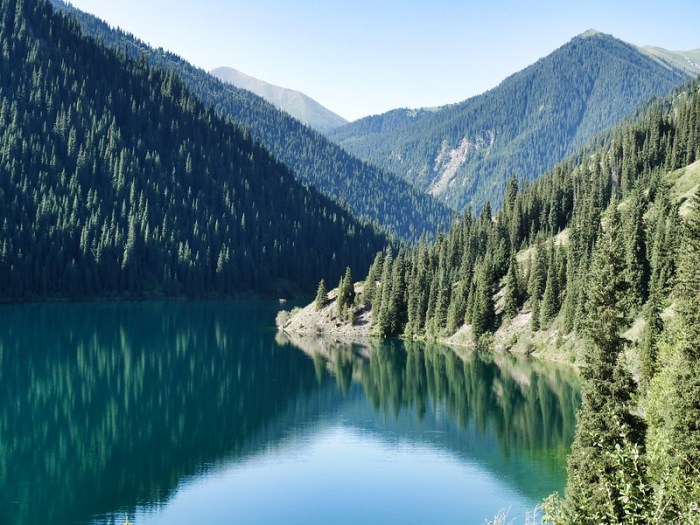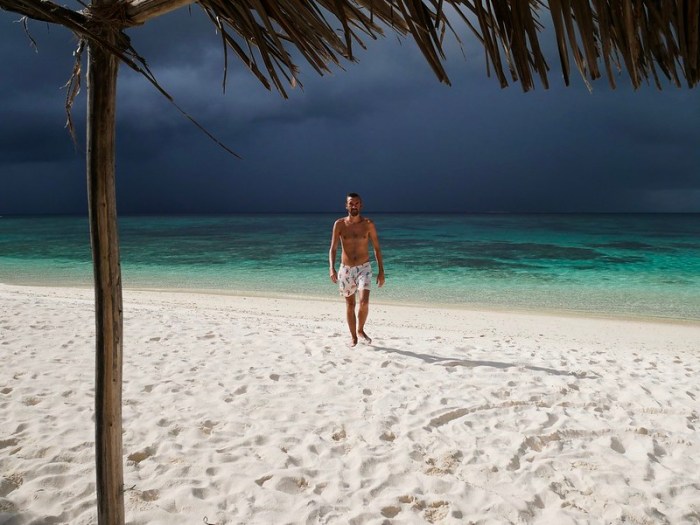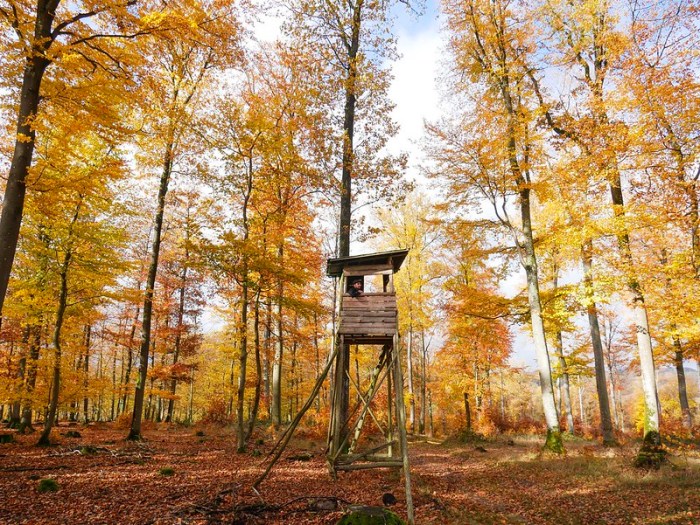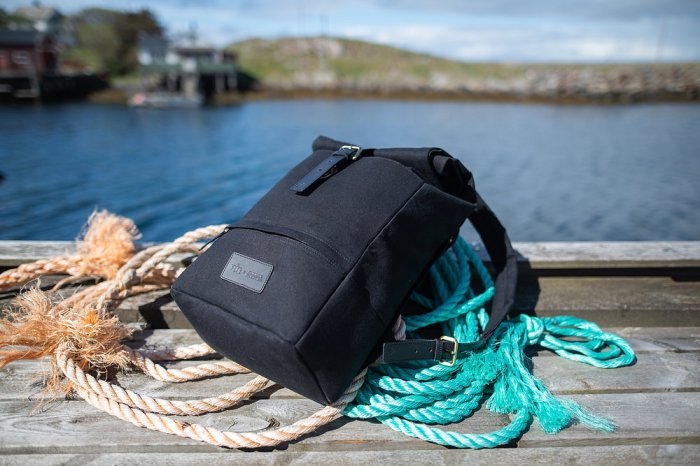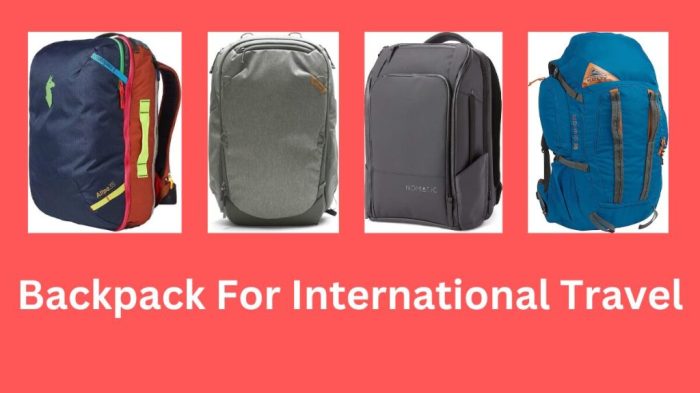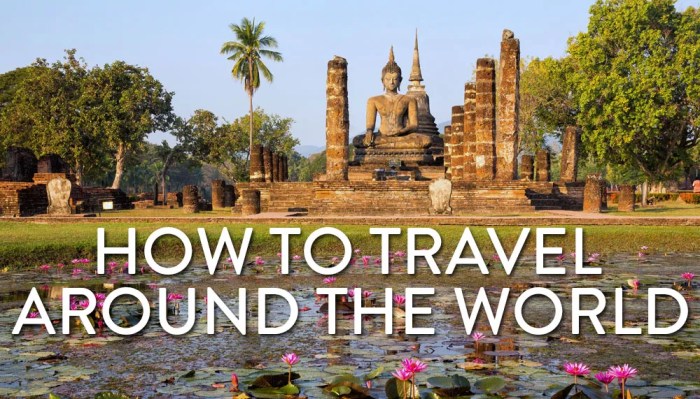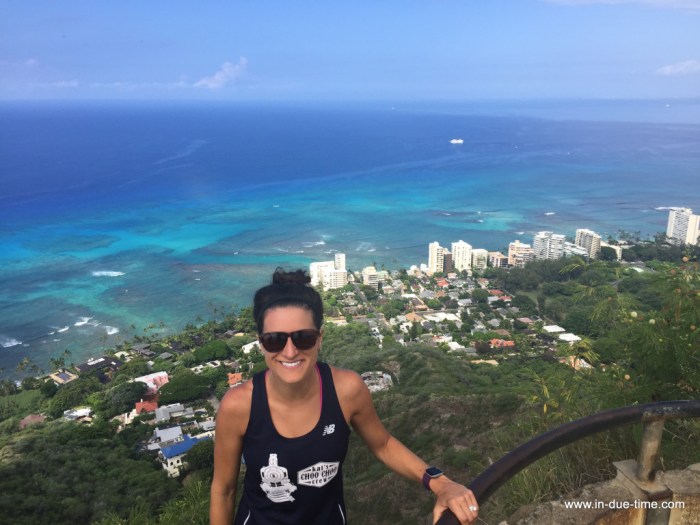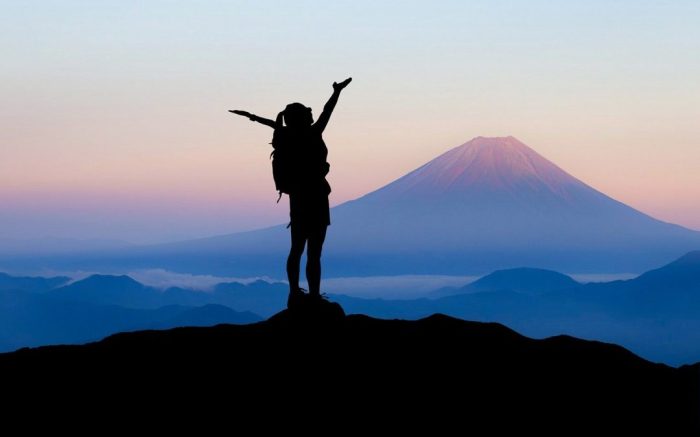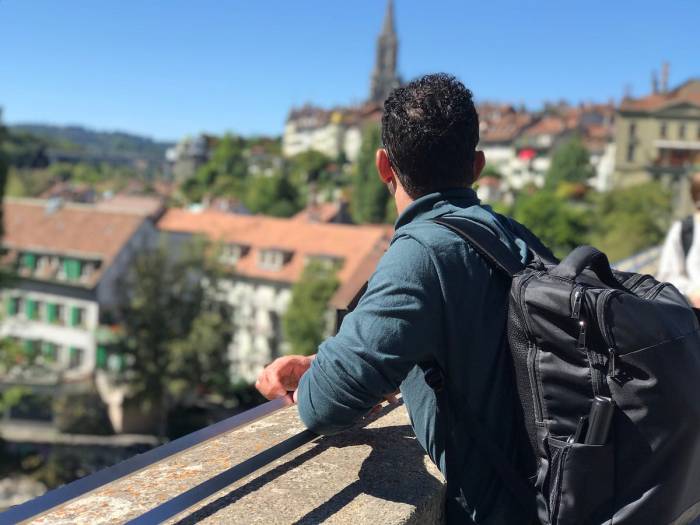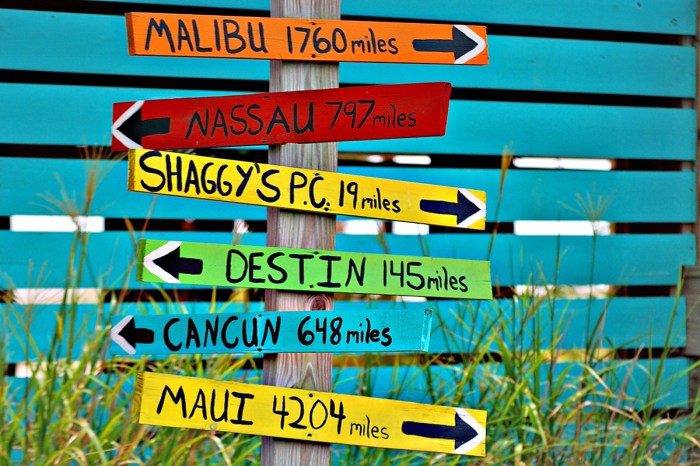How much to travel the world for a year? This question sparks wanderlust and financial anxieties for anyone dreaming of a global adventure. The cost varies dramatically depending on your travel style, destinations, and how meticulously you plan. From budget backpacking to luxury exploration, this comprehensive guide delves into the multifaceted costs of a year-long journey, providing detailed breakdowns, actionable strategies, and crucial considerations.
Understanding the financial landscape of a year-long world trip is paramount. This exploration considers various elements: accommodation choices, transportation methods, food expenses, and activity costs. Crucially, the guide also examines how factors like travel season, visa requirements, and currency fluctuations impact the overall budget. By examining different travel styles and their corresponding expenses, readers gain a nuanced understanding of what it truly takes to make this dream a reality.
Budget Breakdown
Planning a year-long world trip demands meticulous budgeting. Understanding the variable costs across different regions and travel styles is crucial for a realistic financial plan. A comprehensive budget allows travelers to adjust their expectations and allocate resources effectively for diverse experiences.A well-structured budget is not just about tracking expenses; it’s about aligning spending with personal preferences and travel priorities.
Different travelers have different spending habits, influencing the overall cost of their journeys. Whether prioritizing luxurious accommodations, immersive cultural experiences, or budget-friendly adventures, the budget will reflect those choices.
Potential Costs by Region
Understanding regional cost variations is essential for accurate budgeting. The cost of living and travel expenses differ significantly across continents. For instance, Southeast Asia typically offers more affordable accommodations and food than Western Europe. Careful consideration of these regional differences is key to a realistic budget.
- Asia: Southeast Asia, with its vibrant culture and affordable options, can be a budget-friendly choice. Food costs are generally lower than in Western Europe or North America, and accommodations can range from hostels to boutique hotels. Transportation options like buses and trains offer cost-effective ways to explore. However, certain areas like Japan or South Korea can have higher costs for food and activities.
- Europe: European travel can range from moderate to high depending on the destinations and travel style. While some cities offer budget-friendly options, others, particularly those in major tourist hubs, have higher costs for accommodations and activities. Travel within Europe via trains and buses can be cost-effective but may not be as convenient as flying.
- North America: North American travel generally involves higher costs for accommodation and food compared to other regions. Transportation costs, including flights and rental cars, can also be significant. However, the availability of various activities and attractions may balance the overall expense.
- South America: South America offers a blend of affordable and high-cost destinations. Some areas provide budget-friendly options, while others, like major cities, have more expensive accommodation and dining costs. Exploring the region’s natural beauty can be budget-friendly, but visiting specific attractions or engaging in certain activities can incur higher expenses.
Accommodation Options and Costs
Accommodation costs vary greatly depending on the chosen option. The range extends from budget-friendly hostels to luxurious hotels and vacation rentals.
- Hostels: Hostels are an economical choice for budget travelers, providing shared rooms and dorm-style accommodations. They offer social interaction and can be a great way to meet fellow travelers.
- Guesthouses: Guesthouses often offer private rooms and a more personal experience than hostels. Costs typically fall between hostels and hotels.
- Hotels: Hotels provide varying levels of comfort and amenities. The cost depends heavily on the hotel’s location, star rating, and services.
- Airbnb: Airbnb offers a range of accommodations, from apartments to entire houses. Costs can be competitive with hotels or guesthouses, depending on the property and location.
Transportation Costs
Transportation costs are a significant factor in a global journey. Different methods of transport have different price points and levels of convenience.
- Flights: Flights are a common mode of long-distance travel. Booking in advance and being flexible with dates can often lead to significant cost savings. Consider budget airlines or alternative airports.
- Trains: Trains offer a comfortable and scenic way to travel, especially within Europe or certain parts of Asia. They can be a more expensive option than buses or flying but provide a different travel experience.
- Buses: Buses are a budget-friendly alternative for long-distance travel, often offering connections to smaller towns and less-visited areas. However, travel times can be longer.
- Other Modes: Ferries, ride-sharing services, and local transportation within cities can vary greatly in cost and availability. Researching these options for specific destinations is essential.
Food Costs
The cost of food varies significantly depending on the region and the choice of dining.
- Eating Out: Eating out in tourist areas or upscale restaurants is often more expensive than preparing meals independently.
- Cooking Meals: Preparing meals in hostels, guesthouses, or rented accommodations can significantly reduce food costs.
- Local Markets: Exploring local markets can provide affordable and authentic culinary experiences. Cooking with fresh, local ingredients can be an economical and culturally enriching option.
Sample Budget Template
A sample budget template should include sections for each region, accommodation types, transportation, food, activities, and miscellaneous expenses. It should be adaptable to individual preferences and travel styles.
“A detailed budget template is a valuable tool for managing finances throughout the journey.”
Estimated Costs for Activities
Activities and experiences can range from free to highly expensive, based on their type and location. It’s important to anticipate these costs and incorporate them into the budget.
| Activity/Experience | Estimated Cost (per day) |
|---|---|
| Museums | $20-50 |
| Historical Sites | $10-30 |
| Cultural Performances | $15-80 |
| Outdoor Activities | $10-50 |
Factors Influencing Trip Cost
A year-long world journey presents unique financial considerations beyond the typical vacation. Understanding the variables that impact the total cost is crucial for effective budgeting and realistic planning. The interplay of travel seasonality, visa regulations, currency fluctuations, and personal spending habits all contribute to the final price tag. Careful planning and adaptation to changing circumstances are vital for managing the financial aspects of this extensive expedition.Planning a global adventure demands a thorough understanding of cost drivers.
Estimating a year-long global adventure’s cost can be tricky. Factors like your spending habits and desired experience significantly impact the budget. However, a shorter trip, such as a 3 month round the world trip , can offer a valuable taste of international travel while keeping expenses manageable. Ultimately, a year-long journey demands careful planning and a realistic assessment of your financial resources.
Factors like travel season, visa prerequisites, and currency exchange rates can dramatically affect the overall expense. Strategic saving and investment approaches can help secure the financial foundation for a successful journey. Implementing cost-saving measures and effective expense tracking mechanisms are essential for managing the financial demands of such an extended expedition. A nuanced comprehension of various travel styles and their corresponding financial impacts further empowers informed decisions.
Travel Seasonality and Its Impact
Varying travel seasons significantly affect prices. Peak season, coinciding with popular holidays and school breaks, typically results in higher costs for flights, accommodations, and activities. Off-season travel, on the other hand, offers more affordable options, but may limit access to specific attractions or activities. Understanding these seasonal fluctuations allows travelers to make informed choices that align with their budget.
For example, traveling during the shoulder seasons (spring and fall) often offers a good balance of pleasant weather and lower prices.
Visa Requirements and Costs
Navigating visa requirements is essential for a smooth journey. Different countries have varying visa policies, each with associated costs and processing times. A detailed analysis of visa requirements for each intended destination is vital for accurate budgeting. Countries with strict visa regulations often necessitate significant upfront costs, which must be factored into the overall budget. Careful planning and proactive application procedures can mitigate potential delays and associated costs.
A table summarizing visa requirements and associated costs for key destinations can provide valuable insight:
| Country | Visa Type | Estimated Cost (USD) | Processing Time (Days) |
|---|---|---|---|
| United States | Tourist Visa | 160 | 20-40 |
| Canada | Electronic Travel Authorization (eTA) | 0 | Instant |
| United Kingdom | Visa | 110 | 15-30 |
| Japan | Visa | 100 | 20-30 |
| Australia | Visa | 100 | 15-30 |
Currency Exchange Rates
Fluctuations in currency exchange rates can significantly influence the cost of a trip. Conversion rates between different currencies are constantly changing, so understanding the current rates and potential fluctuations is crucial for budgeting. Currency exchange platforms or online tools can be used to track these rates and manage potential losses. Real-time tracking and comparison of exchange rates are crucial for making informed financial decisions.
Travel Insurance Considerations
Comprehensive travel insurance is vital for mitigating potential financial risks. Unexpected medical emergencies, trip cancellations, or lost belongings can quickly deplete funds. Travel insurance offers protection against these unforeseen events, helping maintain financial stability throughout the journey. The cost of travel insurance depends on the coverage and duration of the trip, but it is often a worthwhile investment.
Figuring out how much to budget for a year-long global adventure is a crucial first step. While specific costs vary widely, exploring local trails around me, like those featured in trails around me , provides valuable insight into budgeting for shorter trips. This can then inform the overall cost estimates for a larger global expedition. Ultimately, meticulous planning and realistic expectations are key to a successful trip.
Consider the level of coverage needed and the associated costs when making a decision.
While a year-long global adventure can be expensive, consider the alternative: experiencing a whirlwind of destinations in three months. This approach, detailed in a recent article about travel the world in 3 months , offers a more focused, budget-friendly option. Ultimately, the cost of a year-long trip hinges on your choices, from accommodations to activities.
Savings and Investment Strategies
Accumulating sufficient funds is critical for a successful world trip. A well-defined savings plan, coupled with smart investment strategies, can significantly boost funds. Diversifying investment portfolios can help mitigate potential risks and maximize returns. Long-term savings plans and consistent contributions can facilitate the accumulation of the necessary funds.
Minimizing Costs in Different Areas
Careful planning can minimize costs in various areas. Utilizing budget-friendly accommodation options, like hostels or guesthouses, can significantly reduce accommodation expenses. Cooking meals instead of eating out daily can also save a substantial amount on food costs. Transportation alternatives, like public transportation or cycling, can lower travel costs.
Managing and Tracking Expenses
Effective expense tracking and management are crucial for maintaining control over the budget. Using budgeting apps or spreadsheets can help track spending in real-time. Regular review of expenses and adjustments to the budget are essential to maintain financial stability. Categorizing expenses, such as accommodation, food, and activities, provides a clear picture of spending habits.
Comparing Different Travel Styles
Different travel styles have distinct cost implications. Budget travelers, prioritizing affordability, often choose hostels, local transportation, and home-cooked meals. Luxury travelers, on the other hand, opt for premium accommodations, fine dining, and exclusive experiences. The choice of travel style directly impacts the overall cost of the trip.
Practical Considerations for Cost Management

Source: shaleewanders.com
Figuring out how much to budget for a year of global exploration can be tricky. Expenses vary drastically depending on your travel style, but a solid estimate often involves meticulous planning and prioritizing experiences over luxury. To find reliable insights on travel destinations and their associated costs, consult a reputable travel resource like Travel. Ultimately, the cost of a year-long world tour hinges on factors like accommodation choices, activity preferences, and transportation methods.
Global travel, while enriching, demands meticulous planning and cost-conscious strategies. Understanding the factors that drive expenditure is crucial to optimizing your journey. This section delves into actionable steps for curating a budget-friendly travel experience, highlighting ways to reduce costs across various facets of your trip.Careful planning and strategic choices are paramount for a financially sound global adventure. By adopting practical cost-management techniques, travelers can maximize their experience while minimizing financial strain.
The following sections Artikel proven strategies for achieving this balance.
Strategies for Reducing Travel Expenses
Effective travel budgeting necessitates a proactive approach to minimizing costs. Packing light reduces baggage fees, and utilizing public transportation significantly lowers transportation expenses. This often results in substantial savings compared to relying solely on taxis or ride-sharing services.
- Packing Light: A minimalist approach to packing minimizes checked baggage fees, especially vital for budget-conscious travelers. Strategically selecting versatile clothing items that can be mixed and matched significantly reduces the need for excessive items. This also facilitates easier travel on public transportation, often with cheaper fares than taxis or ride-sharing options.
- Public Transportation: Researching and utilizing local public transportation systems can be a game-changer for reducing transportation costs. In many cities, efficient and affordable public transport networks exist, providing cost-effective options to navigate different parts of the city or country.
Securing Affordable Accommodation
Finding budget-friendly accommodation is key to maximizing travel funds. Consider options beyond traditional hotels, like hostels, guesthouses, or Airbnb. These alternatives often offer significant savings while maintaining comfort.
- Hostels: Hostels are renowned for providing affordable lodging options, especially beneficial for solo travelers or groups. They often include social spaces, allowing travelers to connect with others and exchange experiences. Hostels typically have communal areas, which can offer a more social and budget-friendly travel experience.
- Guesthouses/Airbnb: Guesthouses and Airbnb offer a range of budget-friendly options, catering to different needs and preferences. Often, they offer more privacy and comfort compared to hostels, while maintaining a lower price point than hotels.
Free and Low-Cost Activities
Many destinations offer free or low-cost opportunities for exploration. Taking advantage of these experiences can dramatically reduce travel expenditure without sacrificing quality.
- Free Walking Tours: Free walking tours are a popular and affordable way to explore a city’s highlights. These tours are led by local guides, providing insights into the history, culture, and hidden gems of the city.
- Parks and Nature Reserves: Many parks and nature reserves offer breathtaking views and opportunities for outdoor activities without any entrance fees. This offers a chance to appreciate the natural beauty of a destination without incurring extra costs.
Resources for Finding Deals
Numerous resources can help find the best deals on flights and accommodation. Utilizing these tools allows travelers to optimize their spending.
- Flight Comparison Websites: Websites dedicated to comparing flight prices allow travelers to see the best deals from various airlines. These tools are invaluable for finding the most economical flights and can save a significant amount of money on airfare.
- Accommodation Booking Platforms: Websites dedicated to comparing accommodation prices offer a wealth of options, ranging from budget-friendly hostels to luxury hotels. These tools are instrumental in finding the best deals on accommodations, and the availability of discounts often depends on booking in advance.
Saving Money While Traveling
Savvy travelers implement various methods to stretch their travel funds. Travel rewards programs can accumulate points toward future travel, while preparing some meals can significantly reduce dining expenses.
- Travel Rewards Programs: Many credit cards and airlines offer travel rewards programs. Accumulating points through these programs can be used to offset future travel expenses, making trips more affordable and rewarding.
- Cooking Meals: Preparing some meals while traveling, particularly breakfast and lunch, can significantly reduce dining expenses. This allows travelers to maintain control over their food budget and can save considerable money compared to eating out for every meal.
Researching and Comparing Prices
Effective price comparison is essential for maximizing savings. Carefully researching and comparing flight and accommodation options is crucial for budget-conscious travelers. This process involves using multiple platforms to identify the best deals.
- Flight Comparison: Use multiple flight comparison websites to compare prices from different airlines and travel agencies. This allows travelers to find the most cost-effective options available.
- Accommodation Comparison: Similarly, compare prices across various accommodation booking platforms to identify the best deals on hotels, hostels, or other lodging options. This ensures travelers are securing the most affordable accommodations for their trip.
Travel Rewards Programs, How much to travel the world for a year
Accumulating points through various travel rewards programs can offset future travel costs.
| Program | Benefits |
|---|---|
| Airline Miles | Free flights, upgrades, and other perks |
| Hotel Rewards Programs | Discounted stays, free nights, and exclusive access |
| Credit Card Travel Rewards | Points redeemable for flights, hotels, and other travel services |
Alternative Trip Styles and Costs
Global travel offers a spectrum of experiences, each demanding a unique budget. Understanding these varying styles, from budget-conscious backpacking to luxurious expeditions, is crucial for effective planning. A tailored approach, factoring in personal preferences and financial capacity, ensures a fulfilling journey.
Solo Travel
Solo travel often boasts unparalleled freedom and self-discovery, but its costs can fluctuate. Independent travelers have the flexibility to tailor their itineraries and choose accommodations that best fit their budget. From hostels to boutique hotels, options abound. Food expenses, however, can be influenced by dietary preferences and dining choices.
Backpacking
Backpacking, a popular choice for budget-conscious travelers, focuses on maximizing experiences while minimizing expenses. Hostels, budget-friendly accommodations, are a cornerstone of this style. Food is often sourced from local markets and street vendors, contributing to the low daily costs. Transportation options typically include public transport or affordable transportation modes. This style emphasizes immersion in local culture and experiencing destinations on a tight budget.
Luxury Travel
Luxury travel, catering to discerning travelers, involves higher costs associated with premium accommodations, fine dining, and exclusive experiences. Five-star hotels, private villas, and gourmet meals define this category. Transportation might involve private jets or high-end rental cars. Activities like private tours, spa treatments, and high-end excursions often elevate the cost. However, the level of comfort and personalized service can be substantial.
Family Travel
Family travel necessitates a careful consideration of costs. Larger groups generally require more substantial accommodations, potentially including multiple rooms. Travel insurance and childcare expenses can also significantly impact the overall budget. Family-friendly activities and attractions often have associated fees. Accommodation options may include family-friendly hotels or vacation rentals, and careful planning for meals is crucial.
Cost Comparison Table
| Travel Style | Daily Expenses (USD) – Estimated | Accommodation Examples | Food Examples | Activities Examples |
|---|---|---|---|---|
| Solo Backpacking | $20-$50 | Hostels, budget hotels | Local markets, street food | Walking tours, free museums |
| Luxury Travel | $200-$500+ | Five-star hotels, private villas | Fine dining, gourmet restaurants | Private tours, high-end excursions |
| Family Travel (4 people) | $100-$300+ | Family-friendly hotels, vacation rentals | Family meals, restaurants | Theme parks, family-oriented activities |
Budget-Friendly Destinations
Budget-friendly destinations cater to various travel styles. Southeast Asia, with its affordable accommodations and vibrant culture, is a popular choice for backpackers. Central and Eastern Europe offer budget-friendly options for a cultural immersion experience. Certain South American destinations offer a combination of rich history, beautiful landscapes, and cost-effective travel.
Impact of Travel Companions
The number of travel companions directly influences the overall cost. Shared accommodations and transportation can significantly reduce expenses, while larger groups might require more accommodations, potentially increasing the cost. Group travel also presents opportunities for shared experiences and cost-saving strategies.
Resources for Research
Online travel forums, review websites, and travel blogs offer insights into different travel styles and their associated costs. Comparison websites and travel agencies provide valuable data on various destinations and accommodations.
Long-Term Savings and Funding

Source: squarespace-cdn.com
A one-year world trip requires meticulous planning, especially regarding financial preparedness. A comprehensive savings strategy, combined with potential investment vehicles, will be crucial to securing the necessary funds. This section delves into the various avenues for accumulating capital and tools for efficient tracking, ensuring a smooth and enjoyable journey.
Strategies for Long-Term Savings
Effective long-term saving involves consistent effort and a disciplined approach. Setting realistic goals, creating a detailed budget, and identifying potential income streams are vital steps. A clear understanding of financial needs and potential expenses will empower you to prioritize savings.
- Establish a Realistic Savings Goal: Define a specific amount needed for the trip, considering potential fluctuations in expenses. Break down the target into smaller, achievable monthly or quarterly goals. This method helps in maintaining motivation and consistency in saving.
- Automate Savings: Implement automatic transfers from your checking account to a dedicated savings account. This ensures consistent contributions without conscious effort, fostering consistent savings behavior. Consider a high-yield savings account to maximize interest earned.
- Reduce Unnecessary Expenses: Identify and eliminate non-essential spending. Creating a detailed expense log for a month can reveal hidden expenses that can be trimmed. This analysis can help identify areas where savings can be maximized.
- Increase Income Streams: Explore part-time work or freelance opportunities to supplement your income. A side hustle can significantly contribute to your travel fund. Platforms like Upwork or Fiverr can offer various options.
Investment Vehicles for Funding
Various investment vehicles can potentially contribute to your trip fund. However, remember that investment decisions involve risk, and potential returns should be evaluated carefully. Consider your risk tolerance and time horizon when choosing an investment strategy.
- High-Yield Savings Accounts: These accounts offer higher interest rates than traditional savings accounts, allowing for more substantial returns over time. Research different banks and credit unions for competitive rates.
- Certificates of Deposit (CDs): CDs offer fixed interest rates and a fixed maturity date. They provide a guaranteed return, making them suitable for those seeking stability. However, they may not offer the highest return.
- Stocks and Bonds (with caution): Investing in stocks and bonds can yield higher returns, but it comes with greater risk. Diversification and a well-researched approach are crucial to minimize risk. Consider consulting a financial advisor for personalized guidance.
- Index Funds or Exchange-Traded Funds (ETFs): These funds offer diversification and potentially higher returns. They are a good choice for those who want to invest in the stock market but aren’t comfortable picking individual stocks.
Budgeting Tools and Apps
Tracking expenses and managing finances efficiently are essential for effective savings. These tools help you visualize your spending patterns and identify areas for improvement.
- Spreadsheet Software: Tools like Microsoft Excel or Google Sheets allow for customizable spreadsheets to track income, expenses, and savings progress. This approach provides detailed insights into financial behavior.
- Budgeting Apps: Various budgeting apps (Mint, YNAB, Personal Capital) provide intuitive interfaces for tracking expenses, setting budgets, and visualizing spending habits. They offer features to automate savings and categorize transactions.
- Financial Management Software: Advanced software provides detailed financial analysis and insights, including potential return on investments. This allows for more informed financial decision-making.
Part-Time Work or Side Hustles
Supplementing your income with part-time work or side hustles can significantly accelerate your savings. This approach allows you to earn additional income while maintaining your current commitments.
- Freelancing Platforms: Platforms like Upwork and Fiverr offer numerous opportunities to earn extra income through various services. The availability of freelance work is diverse, allowing you to find opportunities that align with your skills and interests.
- Online Courses or Tutoring: Share your expertise through online tutoring or course creation. This can provide additional income and enhance your knowledge and skills.
- Gig Economy Platforms: Delivery services, rideshare platforms, and other gig economy platforms offer flexible income opportunities.
Alternative Funding Sources
Beyond personal savings, exploring alternative funding sources can be beneficial.
- Crowdfunding: Platforms like Kickstarter or GoFundMe can help you raise funds from a wider network of people, making it a viable option to supplement savings.
- Personal Loans: Loans can provide immediate access to capital but should be approached cautiously, considering interest rates and repayment terms.
- Gift or Family Support: Seeking support from family or friends can provide a substantial boost to your savings.
Savings Account Comparison
| Savings Account Type | Potential Return | Risk Level |
|---|---|---|
| High-Yield Savings Account | 3-5% APY (annual percentage yield) | Low |
| Certificates of Deposit (CDs) | Variable, depending on term | Low |
| Money Market Accounts | 0.5-1.5% APY | Low |
| Index Funds | Potentially high, market-dependent | Moderate to high |
Detailed Financial Plan
Developing a detailed financial plan for your trip involves outlining your income, expenses, and savings goals. It should include projected costs, potential savings, and investment strategies.
- Detailed Expense Breakdown: Create a comprehensive list of all anticipated expenses, categorized by destination and activity.
- Savings Timeline: Develop a timeline for achieving your savings goal, outlining specific amounts to save each month or quarter.
- Investment Strategy: Artikel investment options to maximize returns while considering risk tolerance and time horizon.
Visualizing the Journey
Embarking on a year-long global adventure necessitates meticulous planning, from the essentials you pack to the safety precautions you take. This phase involves envisioning the journey, understanding its practicalities, and ensuring a smooth and safe experience. This comprehensive approach is critical for a fulfilling and memorable journey.
Packing Essentials for a Year-Long Trip
Careful packing is crucial for a smooth trip. Packing light is not just about minimizing baggage fees; it’s about maximizing flexibility and reducing stress. Items should be versatile, serving multiple purposes to optimize space.
- Versatile Clothing: Choose clothing items that can be mixed and matched. Consider lightweight, quick-drying fabrics for warmer climates and layering options for varying temperatures.
- Essential Documents: Keep copies of all important documents, including passports, visas, and travel insurance information, separate from the originals. Consider a secure digital storage option.
- Toiletries: Travel-sized toiletries and reusable containers will help conserve space and avoid potential issues with liquid restrictions.
- Electronics: A versatile power adapter and portable charger are crucial. Consider a small, lightweight laptop or tablet for work or entertainment.
- First-Aid Kit: A well-stocked first-aid kit should include medications, bandages, antiseptic wipes, pain relievers, and any personal prescriptions.
International Travel Documents
A comprehensive list of documents is critical for seamless international travel. These documents facilitate entry into countries and ensure a smooth experience.
- Passport: A valid passport with sufficient remaining validity is paramount. Ensure it has ample blank pages for visa stamps and entry/exit records.
- Visas: Obtain necessary visas for all intended destinations, confirming validity and meeting specific requirements.
- Copies of Documents: Create multiple copies of critical documents (passport, visa, tickets, etc.) and keep them separate from the originals.
- Flight Tickets: Confirm the details of all flight tickets, including departure and arrival times, and ensure they are properly stored.
- Travel Insurance Information: Compile and carry copies of your travel insurance policy and emergency contact information.
Importance of Travel Insurance
Travel insurance is a vital component of any extended trip, protecting against unforeseen circumstances. Unexpected events can significantly impact the journey.
“Travel insurance safeguards your financial investment and physical well-being during your journey.”
- Financial Protection: Travel insurance provides coverage for trip cancellations, medical emergencies, lost luggage, and other unforeseen events.
- Medical Expenses: Comprehensive coverage for medical expenses, including emergency evacuation and repatriation, is essential.
- Liability Protection: Consider liability coverage for incidents that may arise during your journey.
- Trip Interruptions: Insurance can cover expenses related to trip interruptions due to unforeseen circumstances.
Packing Lists for Different Seasons and Destinations
A customized packing list is essential for a comfortable and safe journey. Different destinations and seasons necessitate specific items.
| Season | Destination (Example) | Essential Items |
|---|---|---|
| Summer (Tropical) | Southeast Asia | Lightweight clothing, sunscreen, insect repellent, swimwear, rain gear |
| Winter (Mountainous) | Himalayan Region | Warm layers, waterproof outerwear, hiking boots, gloves, hats |
| Spring (Europe) | Italian Countryside | Versatile clothing, light jacket, comfortable walking shoes, rain gear |
Packing Efficiently to Minimize Baggage Fees
Minimizing baggage fees is vital for cost-effective travel. Efficient packing strategies are crucial for optimizing space and weight.
- Roll, Don’t Fold: Rolling clothes minimizes wrinkles and maximizes space in suitcases.
- Pack Appropriately: Ensure all clothing and gear fit comfortably in the chosen luggage.
- Utilize Packing Cubes: Packing cubes help organize clothes and maximize space utilization.
- Prioritize Essentials: Choose only necessary items, prioritizing versatility and functionality.
- Lightweight Luggage: Select lightweight luggage to minimize weight restrictions.
Staying Connected During the Trip
Maintaining communication is vital for staying connected with loved ones and managing travel arrangements.
- Internet Access: Research internet access options at accommodation or in local areas. Consider pre-purchasing a local SIM card for mobile data.
- Mobile Data: A local SIM card provides cost-effective mobile data access in different countries.
- Communication Tools: Utilize communication apps and services for staying in touch with loved ones.
Health and Safety Considerations
Prioritizing health and safety is essential for a positive and secure journey.
- Vaccinations: Consult your doctor about recommended vaccinations for your destinations and adhere to schedules.
- Medical Emergencies: Identify local hospitals and healthcare providers in advance and inform someone about your travel plans.
- Safety Precautions: Be aware of potential safety hazards in different locations and take necessary precautions.
- Health Insurance: Ensure comprehensive health insurance covers potential medical emergencies during the trip.
Ultimate Conclusion: How Much To Travel The World For A Year
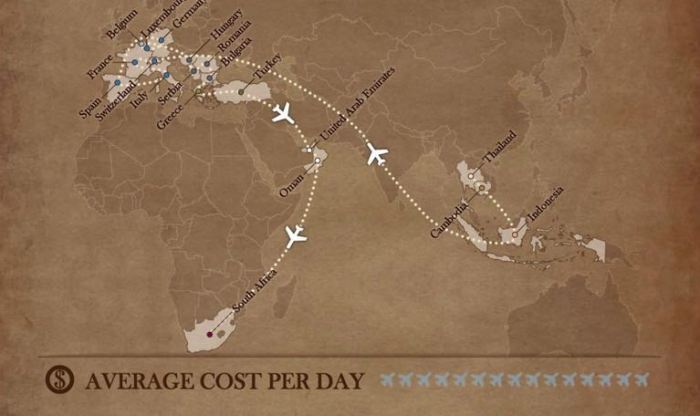
Source: cloudfront.net
In conclusion, crafting a budget for a year-long world trip requires meticulous planning and a keen understanding of your spending habits. This guide has provided a roadmap to navigate the financial aspects of such an ambitious endeavor. By carefully considering the various factors, you can tailor a budget that reflects your aspirations and lifestyle. Remember, the key to a successful journey is not just the destination, but also the journey itself – and planning for it.
Popular Questions
How can I find budget-friendly accommodations?
Hostels, guesthouses, and Airbnb are excellent options. Researching off-season travel and less popular destinations can also significantly reduce costs.
What’s the impact of travel insurance on the budget?
While travel insurance can protect you from unforeseen circumstances, it does add to the overall cost. Weigh the potential benefits against the added expense.
What are some ways to reduce transportation costs?
Utilizing public transportation, taking advantage of budget airlines, and considering alternative transportation methods like trains or buses in specific regions can significantly reduce costs.
Are there resources for finding deals on flights and accommodations?
Numerous websites and apps specialize in finding deals on flights and accommodations. Utilize these resources to maximize your savings.

